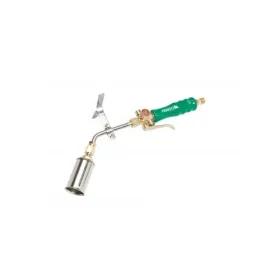Tools for Construction: Understanding the Benefits of a Splitting Wedge

ext-6594401.livejournal.com/853.html
When tackling heavy construction projects, selecting the right tools is crucial for efficiency and safety. A splitting wedge stands out as an essential tool in this context, designed specifically for splitting wood or breaking stone. Understanding how to utilize a splitting wedge effectively can significantly enhance productivity and reduce manual labor
A good splitting wedge can make short work of tough materials, offering a mechanical advantage that saves time. Whether used in logging, landscaping, or construction, this tool allows users to tackle challenging tasks with precision. Familiarity with proper techniques ensures optimal results and minimizes the risk of injury.
Choosing the correct type and size of splitting wedge can greatly impact performance. Factors such as material type, project scale, and user experience play a significant role in tool selection. Knowing these elements can lead to better outcomes in construction efforts.

Essential Construction Tools
Effective construction requires a wide range of tools for construction to ensure precision and efficiency. The following tools are essential for any construction project.
Hammer and Nails
Hammers are fundamental tools used for driving nails into various materials, making them a staple on any job site. There are several types of hammers, including claw hammers, framing hammers, and sledgehammers, each designed for specific tasks.
Claw Hammer: The most common type, suitable for general purposes.
Framing Hammer: Heavier and designed for driving large nails quickly. Sledgehammer: Used for demolition or driving stakes and posts.
Using the right hammer can significantly speed up the building process. The correct nail type also matters; for example, finishing nails provide a cleaner look, while deck screws offer enhanced durability.
Saw and Blades
Saws are crucial in cutting materials such as wood, metal, and plastic. There are several types of saws, each optimized for different applications.
Hand Saws: Basic tools, effective for basic cuts.
Circular Saws: Power saws useful for straight cuts in larger materials.
Miter Saws: Ideal for making angled cuts, particularly for trim work.
Choosing the proper blade type is equally important. Blades are available for specific materials, like wood or metal. Using the right saw significantly enhances accuracy and reduces waste.
Level and Tape Measure
A level ensures that surfaces are even, while a tape measure provides the necessary length measurements.
Levels: Available in various forms, including bubble levels and laser levels.
Tape Measures: Typically retractable, they can measure distances accurately and quickly
Using a level prevents structural issues from arising later, while a tape measure promotes accuracy in cuts and installations. Eye-level alignment can significantly affect the quality of the finished project.
Utility Knife and Pliers
Utility knives serve multiple purposes, from cutting drywall to slicing through packaging. Their retractable blades add safety and convenience.
Pliers come in several varieties, including needle-nose, channel lock, and slip-joint pliers. They are ideal for gripping, twisting, and cutting wires or small components.
Utility Knife: Useful for meticulous tasks requiring precision cutting.
Pliers: Versatile tools that enhance grip and control in various applications.
Having a ready supply of these tools on hand can streamline the construction process significantly
The Splitting Wedge
The splitting wedge is a critical tool in construction and logging. It serves to split wood and other materials effectively, enhancing the speed and efficiency of tasks.
Understanding the different types and proper maintenance is essential for optimal use.
Types and Uses
Splitting wedges come in various designs and sizes. Common types include:
Metal Splitting Wedge: Typically made from hardened steel, this type is durable and effective for heavy-duty tasks.
Plastic or Composite Wedge: Lighter and often used for smaller jobs, it reduces damage to the workpiece.
Wedge with a Handle: These often feature a long handle that allows the user to apply additional force and leverage.
Uses of splitting wedges extend beyond simply splitting wood. They can be applied in:
Tree Felling: Aids in controlling the direction of a tree’s fall.
Log Splitting: Essential for preparing firewood or other wood products.
Construction: Helps with breaking apart materials during demolition.
Safety and Maintenance
Proper safety measures are vital when using a splitting wedge. Important considerations include:
Protective Gear: Users should wear gloves and safety glasses to protect against flying debris.
Stable Positioning: The workpiece should be secure to prevent slipping during the splitting process.
Regular maintenance of the splitting wedge ensures it remains effective. Steps include:
Inspection: Regularly check for chips or cracks in the metal.
Cleaning: Wipe down the wedge after use to prevent rust.
Sharpening: Keeping the wedge sharp enhances cutting efficiency and reduces the effort required during use.
Adhering to these practices maintains the tool's performance and safety
